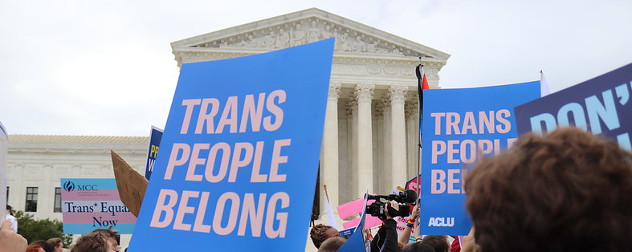
"Protect LGBTQ Workers Rally" in front of the U.S. Supreme Court on Oct. 8, 2019. Photo by Elvert Barnes.
When Congress outlawed employment discrimination based on sex in 1964, it is a fair guess that every lawmaker involved was thinking of the chromosomes and anatomy with which people are born.
This week the Supreme Court surprised more than a few people when it ruled 6-3 that the word “sex,” as used in Title VII of the Civil Rights Act of 1964, does not merely encompass our individual body parts. The court ruled that it also covers what we do with them, who we do it with, and how we identify and present ourselves to the world.
Predictably, the court’s four Democratic-appointed liberal justices signed on to the proposition that discrimination based on sex includes discrimination based on sexual orientation – a reversal of more than a half-century of prior interpretation – as well as gender identity, a term that had only just been coined the year the Civil Rights Act passed. The surprise was that two of the court’s conservative jurists, Chief Justice John Roberts and Justice Neil Gorsuch, agreed. Gorsuch wrote the majority opinion, which aligned so solidly with the liberals’ view that none even felt the need to write a concurrence.
The resulting split with the other conservative justices takes on the tone of a disagreement among Talmudic scholars over a piece of scripture. The liberals have few qualms about reinterpreting laws or the Constitution in light of evolution of modern life. But the conservatives broadly agree that lawmaking should be done by lawmakers rather than judges, and that statutes and the Constitution mean no more or no less than what they say, as viewed by the people who wrote them.
There is no discernible animus against LGBTQ individuals in the dissents filed by Justices Samuel Alito (with whom Justice Clarence Thomas joined) and Brett Kavanaugh. Instead, they argue that a 1964 Congress could not possibly have meant to enact employment protection for homosexuals (as they were then known) and that the resulting statute cannot be read to provide it today. The first argument is true; the second is not.
Conservative as well as liberal justices have regularly extended old language to modern circumstances under conditions that the texts’ authors could not have imagined, let alone intended. Consider the First Amendment guarantee of freedom of speech. Did the drafters of the Bill of Rights consider that burning an American flag might be a form of speech? Unlikely. How about appearing naked on a public stage? Almost inconceivable.
What about a television advertisement or motion picture documentary funded by a corporation or labor union, as in the case of Citizens United? All of the court’s then-sitting conservatives, including Alito and Thomas, were part of a majority that held in favor of protecting this form of speech by corporations (which scarcely existed in the 18th century) and labor unions (nonexistent then in their current form), using media that had not yet been invented when the Bill of Rights was drafted. The liberals, by the way, bitterly opposed this interpretation.
The public understanding of sex, gender and human sexuality has advanced by light-years since 1964. Back then, homosexuality was listed as a “personality disturbance” – a potentially debilitating disorder – by the American Psychiatric Association’s Diagnostic and Statistical Manual. Intimate acts between same-sex partners were illegal in every state but Illinois. The Supreme Court itself accepted this condition in 1986 (Bowers v. Hardwick), only to reverse course in 2003 (Lawrence v. Texas). In 1964, and for decades thereafter, gay men and lesbians were banned from service in the military and from receiving government security clearances – although, of course, gays always served in the military and received clearances. They just stayed in the closet. In 1964, Stonewall was five years in the future and openly gay elected officials even further in the future than that.
“Marriage” used to mean a legal (or in some contexts, religious) relationship between one man and one woman. There are some who still wish it were so, but they are a shrinking minority. The world had already moved on to a new understanding of marriage, at least in the secular sense, before the high court caught up in 2015’s Obergefell v. Hodges decision.
So it is with the word “sex” as it applies in the workplace. In 1964, it meant that, in most cases, whether you were male or female should not be a factor in decisions relating to employment. It still does. The other usage of the word “sex” in 1964 related to who you had sex with, or how often, or under what circumstances. That may not have seemed relevant to employment back when many LGBTQ people had to hide their identities merely to survive in society. But it became relevant once they didn’t.
I understand where this week’s dissenters are coming from. They believe Congress and the state legislatures, about half of which had already addressed employment discrimination against LGBTQ workers, are the proper forums to make the law. The dissenters observed that Congress has repeatedly failed to enact legislation to add sexual orientation to the classes protected under Title VII. They also cited the longstanding (until recently) unanimous view by lower courts that the old language does not extend that far. Unspoken but ever-present in Supreme Court jurisprudence is the decades-long battle over abortion, where a court in Roe v. Wade arguably got out in front of a societal consensus on a highly charged issue.
This case – formally Bostock v. Clayton County, though the ruling covered two additional cases as well – is no Roe v. Wade. It is more like Obergefell. The court is not getting ahead of a societal consensus. Instead, it is catching up to a view that is already widely held, practical, and more or less without anyone whose interests it adversely affects.
Congress already spoke to the role of sex in employment decisions. It said it should not have a role, in most circumstances. Today, depending on the context, “sex” is widely understood to encompass considerably more than the box that is checked on your birth certificate. A purely binary view of the term does not fit well in today’s more fluid, nonbinary world.
If Congress thinks the Supreme Court misunderstood what it did in 1964, it could try to amend the law to deny protection to those who newly enjoy it. Don’t worry – it won’t. If it did, there is little doubt that the courts would promptly strike it down as an unconstitutional denial of equal protection. That thought alone tells us which side was correct in this week’s debate among conservative ecclesiastics.






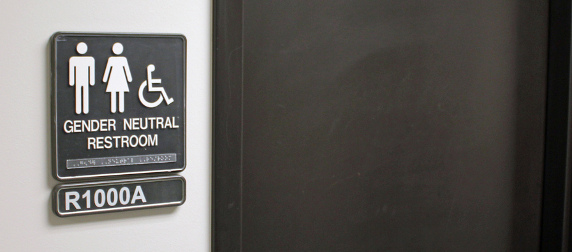

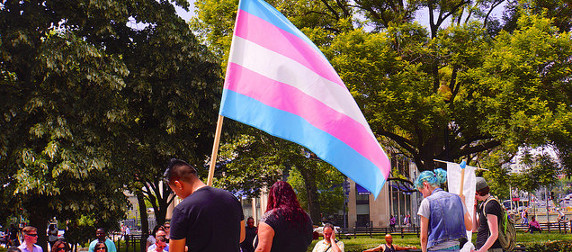
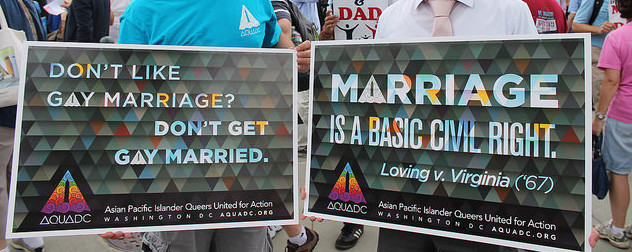
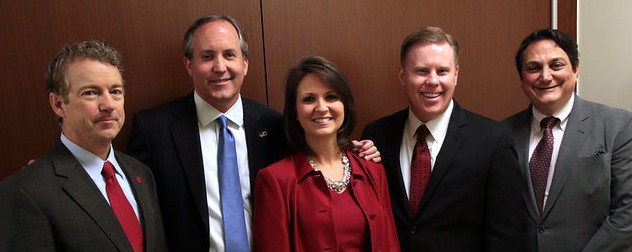



June 20, 2020 - 12:40 pm
That’s interesting that no one introduced the valid question, “Does the Equal Rights Amendment’s new inclusion of men’s and boy’s rights in it ban their “sex discrimination, too?” Of course it benefits males, too. Why hasn’t anyone also mentioned and applauded that in print yet?
My opinion on whether it also bans sex discrimination against anyone who claims the sex as they present themselves! I’m as glad about that as I am when the sex they claim is adopted as the sex they ARE. “So what”, I say; none of our business, as it should never be considered criminal.
..in my own honest opinion as a “straight” old lady.